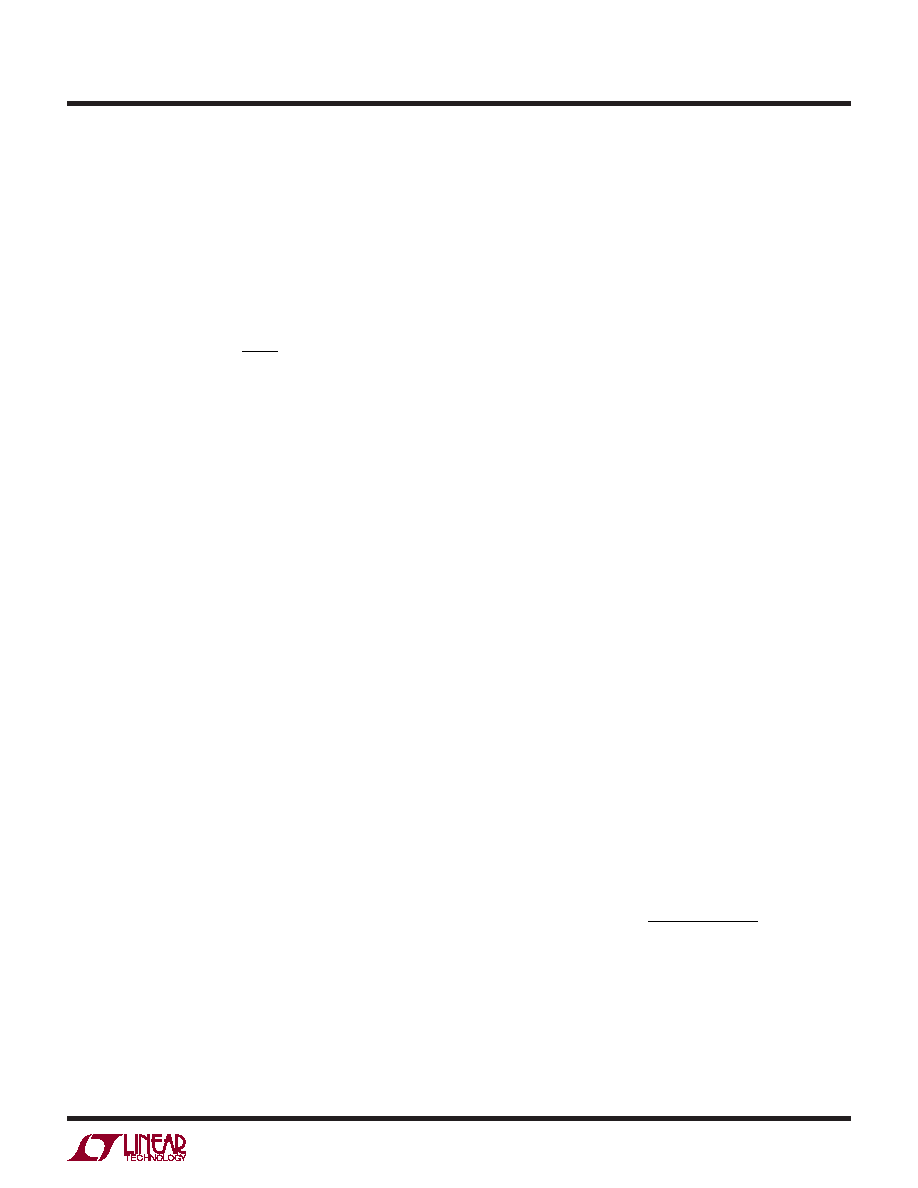- 您現(xiàn)在的位置:買賣IC網(wǎng) > PDF目錄44986 > LT3724MPFE#TR (LINEAR TECHNOLOGY CORP) SWITCHING CONTROLLER, 225 kHz SWITCHING FREQ-MAX, PDSO16 PDF資料下載
參數(shù)資料
| 型號(hào): | LT3724MPFE#TR |
| 廠商: | LINEAR TECHNOLOGY CORP |
| 元件分類: | 穩(wěn)壓器 |
| 英文描述: | SWITCHING CONTROLLER, 225 kHz SWITCHING FREQ-MAX, PDSO16 |
| 封裝: | 4.40 MM, PLASTIC, TSSOP-16 |
| 文件頁數(shù): | 5/26頁 |
| 文件大?。?/td> | 309K |
| 代理商: | LT3724MPFE#TR |
第1頁第2頁第3頁第4頁當(dāng)前第5頁第6頁第7頁第8頁第9頁第10頁第11頁第12頁第13頁第14頁第15頁第16頁第17頁第18頁第19頁第20頁第21頁第22頁第23頁第24頁第25頁第26頁

LT3724
13
3724fd
APPLICATIONS INFORMATION
For maximum efficiency, minimize RDS(ON) and CRSS.
Low RDS(ON) minimizes conduction losses while low CRSS
minimizestransitionlosses.TheproblemisthatRDS(ON)is
inversely related to CRSS. Balancing the transition losses
with the conduction losses is a good idea in sizing the
MOSFET. Select the MOSFET to balance the two losses.
Calculate the maximum conduction losses of the MOSFET:
PCOND =(IOUT(MAX))
2 VOUT
VIN
(RDS(ON))
Note that RDS(ON) has a large positive temperature depen-
dence. The MOSFET manufacturer’s data sheet contains a
curve, RDS(ON) vs Temperature.
Calculate the maximum transition losses:
PTRAN = (k)(VIN)2 (IOUT(MAX))(CRSS)(fSW)
where k is a constant inversely related to the gate driver
current, approximated by k = 2 for LT3724 applications.
The total maximum power dissipation of the MOSFET is
the sum of these two loss terms:
PFET(TOTAL) = PCOND + PTRAN
To achieve high supply efficiency, keep the PFET(TOTAL) to
less than 3% of the total output power. Also, complete
a thermal analysis to ensure that the MOSFET junction
temperature is not exceeded.
TJ = TA + PFET(TOTAL) θJA
where
θJA is the package thermal resistance and TA is the
ambient temperature. Keep the calculated TJ below the
maximum specified junction temperature, typically 150°C.
Note that when VIN is high, the transition losses may
dominate. A MOSFET with higher RDS(ON) and lower CRSS
may provide higher efficiency. MOSFETs with higher volt-
age VDSS specification usually have higher RDS(ON) and
lower CRSS.
Choose the MOSFET VDSS specification to exceed the
maximum voltage across the drain to the source of the
MOSFET, which is VIN(MAX) plus any additional ringing
on the switch node. Ringing on the switch node can be
greatly reduced with good PCB layout and, if necessary,
an RC snubber.
The internal VCCregulatoroperatingrangelimitsthemaxi-
mum total MOSFET gate charge, QG, to 90nC. The QG vs
VGS specification is typically provided in the MOSFET data
sheet. Use QG at VGS of 8V. If VCC is back driven from an
external supply, the MOSFET drive current is not sourced
from the internal regulator of the LT3724 and the QG of the
MOSFET is not limited by the IC. However, note that the
MOSFET drive current is supplied by the internal regulator
when the external supply back driving VCC is not available
such as during startup or short-circuit.
The manufacturer’s maximum continuous drain current
specification should exceed the peak switch current,
IOUT(MAX) + IL/2.
During the supply startup, the gate drive levels are set by
the VCC voltage regulator, which is approximately 8V. Once
the supply is up and running, the VCC can be back driven
by an auxiliary supply such as VOUT. It is important not to
exceed the manufacturer’s maximum VGS specification.
A standard level threshold MOSFET typically has a VGS
maximum of 20V.
Step-Down Converter: Rectifier Selection
The rectifier diode (D1 on the Functional Diagram) in a
buck converter generates a current path for the inductor
current when the main power switch is turned off. The
rectifier is selected based upon the forward voltage, re-
verse voltage and maximum current. A Schottky diode is
recommended. Its low forward voltage yields the lowest
power loss and highest efficiency. The maximum reverse
voltage that the diode will see is VIN(MAX).
In continuous mode operation, the average diode cur-
rent is calculated at maximum output load current and
maximum VIN:
IDIODE(AVG) =IOUT(MAX)
VIN(MAX) VOUT
VIN(MAX)
To improve efficiency and to provide adequate margin for
short-circuit operation, a diode rated at 1.5 to 2 times the
maximum average diode current, IDIODE(AVG), is recom-
mended.
相關(guān)PDF資料 |
PDF描述 |
|---|---|
| LT3740EDHC | 0.14 A SWITCHING CONTROLLER, 330 kHz SWITCHING FREQ-MAX, PDSO16 |
| LT3741EFE#PBF | SWITCHING CONTROLLER, 1070 kHz SWITCHING FREQ-MAX, PDSO20 |
| LT3741IFE#TRPBF | SWITCHING CONTROLLER, 1070 kHz SWITCHING FREQ-MAX, PDSO20 |
| LT3741EUF#PBF | SWITCHING CONTROLLER, 1070 kHz SWITCHING FREQ-MAX, PQCC20 |
| LT3741EUF#TRPBF | SWITCHING CONTROLLER, 1070 kHz SWITCHING FREQ-MAX, PQCC20 |
相關(guān)代理商/技術(shù)參數(shù) |
參數(shù)描述 |
|---|---|
| LT3726EGN | 制造商:Linear Technology 功能描述: |
| LT373L | 制造商:未知廠家 制造商全稱:未知廠家 功能描述:Optoelectronic |
| LT373LF | 制造商:EDSYN 功能描述:LONER Angle Face Soldring Tip High-Temperature Rated for Lead-Free Process W: .0 |
| LT373L-UR | 制造商:未知廠家 制造商全稱:未知廠家 功能描述:Optoelectronic |
發(fā)布緊急采購,3分鐘左右您將得到回復(fù)。